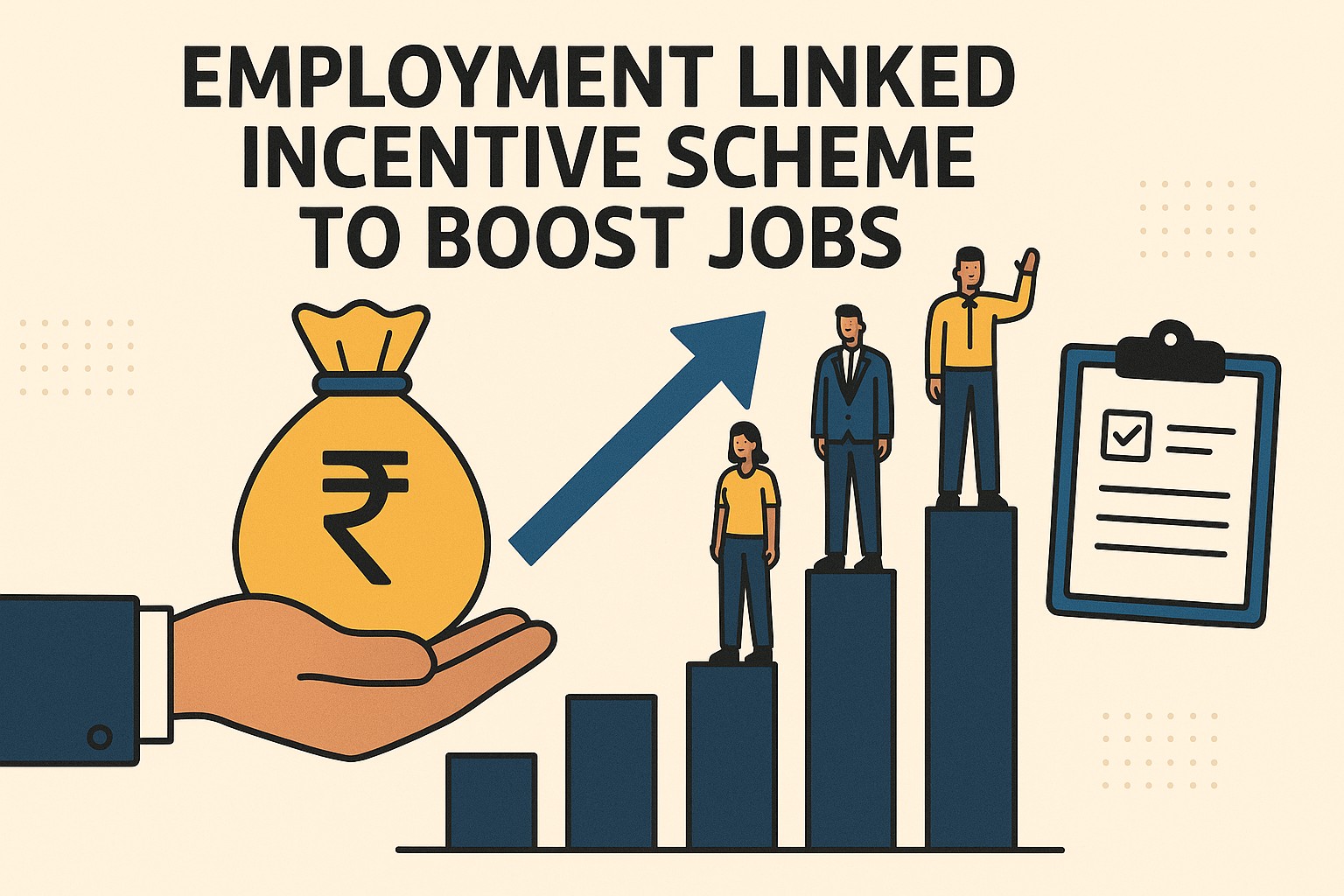Employment Linked Incentive Scheme is emerging as a transformative policy instrument aimed at significantly increasing formal employment in India’s manufacturing and services sectors. With a proposed financial outlay of ₹1 lakh crore over five years, the scheme has been designed to incentivize companies to create sustainable, quality jobs and deepen India’s social security net.
The Indian government unveiled this ambitious initiative in early July 2025, highlighting its potential to address chronic underemployment while fostering inclusive economic growth. The Employment Linked Incentive (ELI) Scheme is modeled in part on the successful Production Linked Incentive (PLI) programs, but with a sharper focus on workforce expansion rather than merely output.
According to the official statement from the Ministry of Labour and Employment, the ELI scheme will reward enterprises across sectors that demonstrate measurable increases in formal employment, tracked through statutory filings such as EPFO (Employees’ Provident Fund Organisation) and ESIC (Employees’ State Insurance Corporation) enrollments.
Key Objectives of the Employment Linked Incentive Scheme
The scheme is designed to:
-
Generate large-scale, formal employment, especially in labor-intensive sectors.
-
Support micro, small, and medium enterprises (MSMEs) with hiring incentives.
-
Enhance social security coverage by linking incentives to formal registrations.
-
Spur technological adoption and upskilling as companies modernize operations to qualify for benefits.
Specs & Features
-
Budget Allocation: ₹1 lakh crore over 5 years.
-
Target Sectors: Manufacturing (textiles, electronics, auto parts) and select services.
-
Incentive Model: Direct subsidies per new formal employee hired and retained.
-
Verification: Mandatory EPFO/ESIC registration and compliance.
-
Disbursement Frequency: Annual payouts based on verified employment data.
-
MSME Focus: Special provisions for small businesses to access funding.
-
Skill Development: Alignment with skilling programs to boost productivity.
Outline of the Scheme’s Rationale
The scheme comes at a time when India faces persistent challenges in job creation. Despite strong GDP growth, much of the employment remains informal or precarious. A 2024 NITI Aayog report estimated that over 80% of India’s workforce lacked formal contracts or social security benefits.
The government believes that an employment-focused incentive framework will help companies transition more workers into formal payrolls, thereby improving income security and compliance.
A senior official cited in India Today Insight explained, “The ELI scheme is structured to directly link the incentives to the number of jobs created, verified through transparent statutory records. This ensures accountability and impact.”
Potential Impact
Analysts expect that if effectively implemented, the scheme could create millions of jobs over the next decade, strengthening India’s demographic dividend. However, experts also caution that:
-
Administrative capacity for verification must be enhanced.
-
Timely disbursal of incentives will be critical to maintaining industry participation.
-
Skill mismatches need to be addressed in parallel.
According to Insights on India, the success of the Employment Linked Incentive Scheme will hinge on close coordination among the Ministry of Finance, Ministry of Labour, and sectoral ministries to resolve bottlenecks and avoid delays.
Industry Reactions
Industry bodies, including the Confederation of Indian Industry (CII), have welcomed the policy. In a statement, CII said, “The ELI scheme is a forward-looking step to formalize employment and support enterprise growth. We urge the government to ensure simplified procedures so that MSMEs can benefit effectively.”
Labor economists note that if the scheme is complemented by stronger labor law enforcement and digital tracking systems, it could reshape the employment landscape and encourage firms to prioritize long-term job creation.
Conclusion
The Employment Linked Incentive Scheme stands out as a bold policy innovation tailored to India’s unique economic challenges. By directly linking financial support to formal hiring, the government aims to unlock a virtuous cycle of growth, security, and productivity. As the implementation unfolds, all eyes will be on whether it can deliver on its promise of high-quality, formal jobs at scale.

